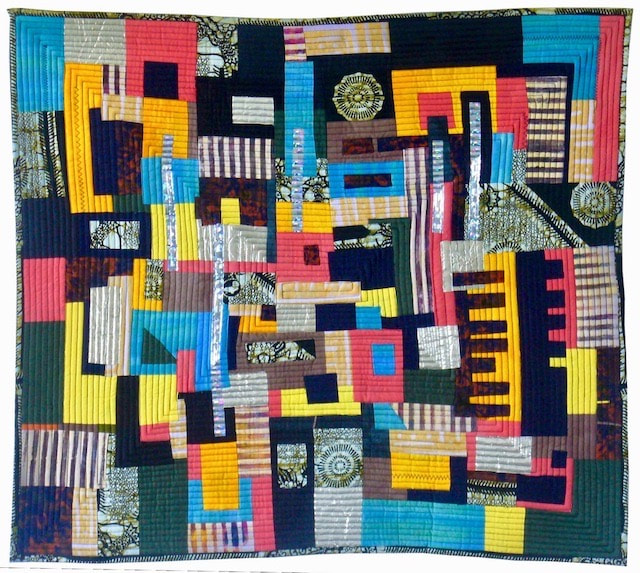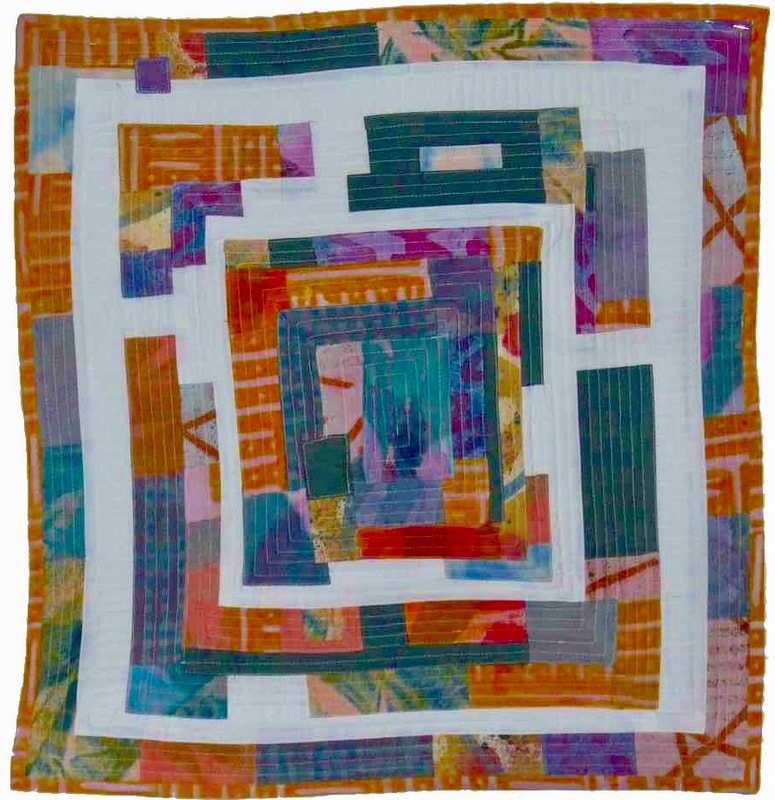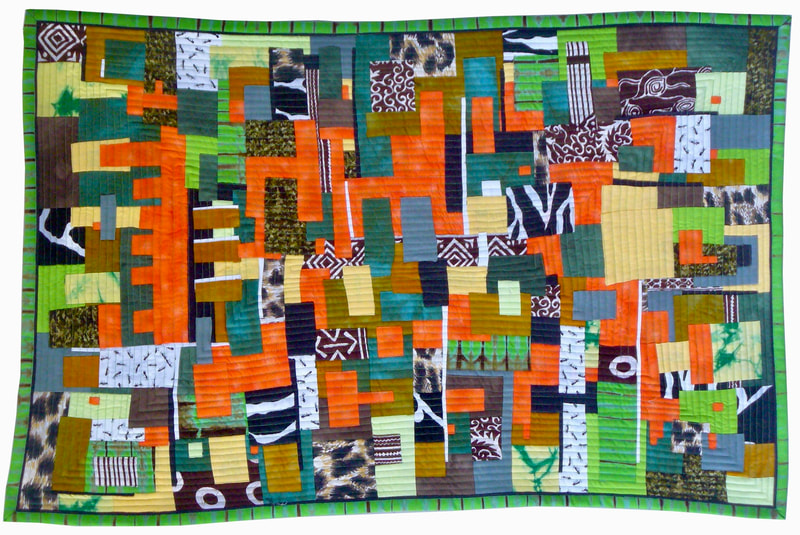Samples of African Quilts: Patchwork Without Piecing
Workshop Details for African Quilts: Patchwork Without Piecing
Kawandi quilts have made a remarkable journey thanks to the efforts of Margaret Fabrizio. Margaret's discovery and appreciation of the traditional African slave roots of Siddi quilters in Karnataka, India, helped bring kawandi quilts back to East Africa, where they are warmly embraced with a "Welcome home!" sentiment.
In this workshop, participants will be able to learn the art of kiwandi-making with a unique twist: these African quilts are sewn entirely by machine. This method makes the process easier and faster and adds to the African essence of the quilts, as they are made with African fabrics and reflect their rich history.
The machine sewing technique allows for greater individual expression and imparts a distinctive character to the quilts. Each construction decision, from color and fabric choices to other creative elements, unexpectedly contributes to the final outcome, making the workshop a delightful and surprising experience.
Join Dena for African Quilts: Patchwork Without Piecing and prepare to be amazed by the wonderful results!
In this workshop, participants will be able to learn the art of kiwandi-making with a unique twist: these African quilts are sewn entirely by machine. This method makes the process easier and faster and adds to the African essence of the quilts, as they are made with African fabrics and reflect their rich history.
The machine sewing technique allows for greater individual expression and imparts a distinctive character to the quilts. Each construction decision, from color and fabric choices to other creative elements, unexpectedly contributes to the final outcome, making the workshop a delightful and surprising experience.
Join Dena for African Quilts: Patchwork Without Piecing and prepare to be amazed by the wonderful results!
|
Skill level: Beginner to Advanced
Duration: 3 hours without binding or 6 hours with binding included Pricing: Click here. |
|
Supply List for African Quilts: Patchwork Without Piecing
Fabrics for "African Quilts: Patchwork Without Piecing" should be African fabrics. About half of the fabrics should be solid colors popular on the African continent, generally full-saturation hues, teamed with solid black and white or near-black and near-white.
Solid colors work well to define shapes. Small to medium sized prints merge in unexpected ways, often yielding surprising results. Too many prints cause the patch shapes to merge and disappear.
Solid colors work well to define shapes. Small to medium sized prints merge in unexpected ways, often yielding surprising results. Too many prints cause the patch shapes to merge and disappear.
- Selection of fabric scraps, fat quarters, and other small pieces, enough to permit unlimited selection in at least 8-12 different colors/prints
- One large piece of print fabric, about 1 yard of 36" wide fabric, to serve as backing and binding for the quilt and to supply some patches to carry the colors/print into the quilt top
- One piece of batting, about 450 sq. in. in area. A piece of fabric measuring 18" x 24" contains 432 sq. in. Your quilt need not be an 18" x 24" rectangle; it might instead be a square or a longer rectangle, but if you work on a piece much larger than that in area, you won't have time to finish the quilt.
- Sewing machine and sewing kit (needles, pins, thread snips, etc.), extension cord
- Walking foot (not mandatory, but it does help)
- One spool of thread is required; other colors and decorative threads are optional
- About a dozen safety or bent safety pins to secure layers
- A pair of sharp dressmaker shears; rotary cutting equipment is not required for the 3-hour session, but it will be useful for the 6-hour session
- A small selection of ribbons, tapes, trims, and other decorative elements
- Irons and ironing boards are not required


